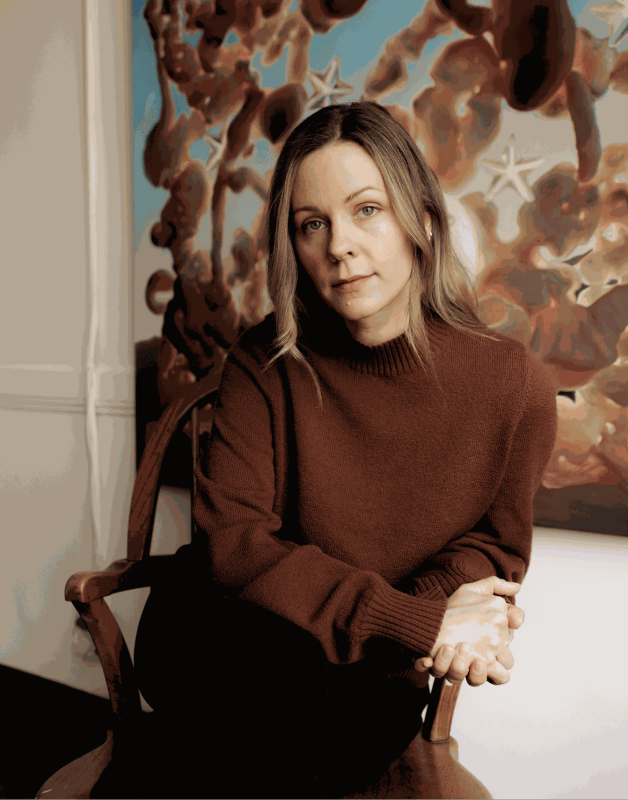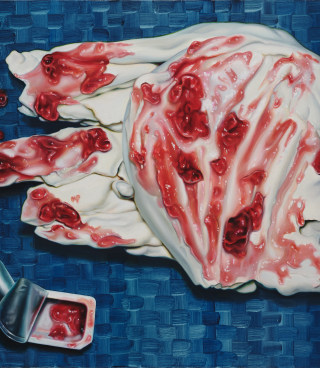Lauren Satlowski Joins Timothy Taylor
Timothy Taylor is pleased to announce the representation of American artist Lauren Satlowski (b. 1984) in London and New York. The gallery will present a solo exhibition of the artist's work for the New York location in October 2025.
With her seductive photorealist oil paintings featuring uncanny still lifes and object studies, Satlowski investigates themes of perception, memory-both personal and collective-and the aesthetics of consumer culture. Drawing on the visual language of commercial photography, cinema, and 17th-century vanitas painting, her compositions offer ambiguous arrangements of found objects in glossy, hermetic spaces that suggest enigmatic narratives. Accumulated during travel or picked up along the course of daily life, some of the depicted objects are organic and ephemeral-flowers, beans, spiders, and scorpions-but many have an uncertain relationship to time, including plastic and otherwise fabricated knickknacks. Satlowski selects objects that might function as potent associative vessels for the viewer-dolls, ornaments, perfume, masks, hotel shampoo-photographing them in inscrutable configurations before painting them in preternaturally vivid detail. She is compelled by the notion of the souvenir and the idea that an object might be a proxy for experience, conjuring-and quietly interrogating-feelings of longing and nostalgia.
Often, Satlowski's compositions feature refracted light. Channelling dramatic illumination through trinket prisms, plastic picture frames, Ziploc bags filled with water, scotch tape, and panes of glass, she plays with notions of transparency, illusion, and reflection. In this way, her scenes possess an intensely psychological dimension. Throughout the work, conflicting qualities-pleasure and fear, harmony and tension-are held together. This is emphasised by the seeming slippages between digital and physical space in the canvases: while the composed objects Satlowski paints are analogue and unfiltered, their spectral incandescence lends them a virtual effect. In Eggs with Jacaranda Shadow (2020), for example, an arrangement of eggs beneath the lacy shadow of a branch in a glass vase reads at first like drops of water on a screen. These visual ambiguities encourage the viewer to consider the ways in which our virtual experiences impact our perception of the physical world.

